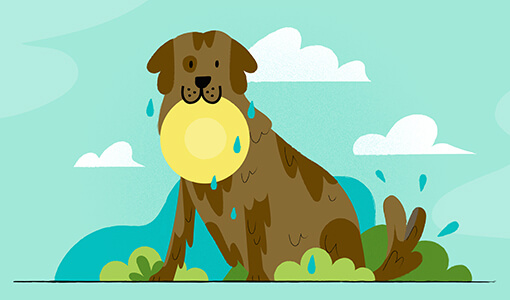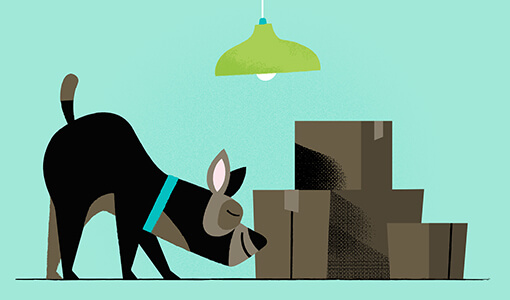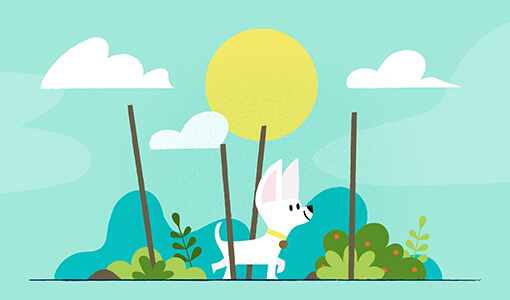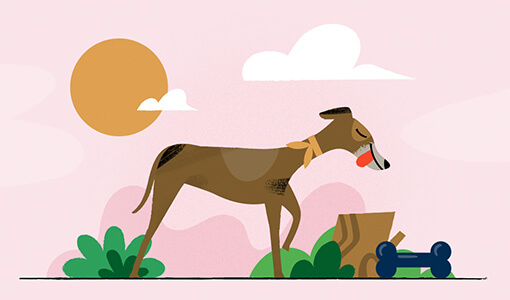Cruciate disease can happen as a sudden rupture, often due to excessive twisting. Sometimes however the cruciate ruptured as the end-stage of a more gradual degeneration that’s occurred over time whereby the ligament frays like an old rope. The cranial cruciate ligament is in your dog’s knee joint and it’s one of the most common orthopaedic issues seen in dogs.
Following a diagnosis of cruciate disease, most dogs over 10kg will require surgery. Your vet will have provided you with a rehabilitation and exercise plan immediately post-surgery, and it is important to stick to it to avoid further injury and support recovery.
However, once your dog has recovered from the cruciate surgery, you may be wondering what activities your dog can enjoy without risking a recurrence. Here are some ideas that if managed sensibly, shouldn’t put strain on your dog’s joints.

Fetch from water
One of the exercises that dogs with cruciate ligament problems tend to be advised against, is ‘chase and fetch’. This is because many dogs will jump, twist and turn during this activity which puts a lot of pressure on damaged or recovering knee joints. While not suited to every dog or breed, retrieving from water might be a good substitute.
- First, find out if your dog enjoys swimming. Not all breeds will be keen but typically Retrievers, Poodles, Spaniels and Setters love water.
- Choose a suitable location. Most water-loving dogs will happily leap into the nearest pond or river, but this may not be the best place for them to swim. Care needs to be taken to avoid steep-sided rivers and lakes that have slippery banks.
- A better option is a hydrotherapy pool, which is commonly used for rehabilitation for a range of canine orthopaedic conditions. Many of these also offer sessions for fun swims.
- If he’s keen on water, find a floating toy that your dog is particularly interested in, place it in the pool and encourage your dog to fetch.

Hide and seek
If your dog’s normal exercise routine needs to change to be shorter and less intense, hide and seek games might be a good alternative. Most dogs love to use their noses. By engaging a dog’s natural searching instinct to find treats, you can mentally stimulate him and provide him with enrichment in a way that is much gentler on the joints.
- Gather five or six small boxes and put a food treat inside one of them.
- Encourage your dog to sniff around the boxes to find the one containing the treat.
- Once your dog has decided which box contains the treat, you can open it up to reveal his reward. You can then hide another treat and play again.
- As your dog becomes more expert at this game, you can make it more challenging by increasing the number of boxes or by concealing them around the room or garden.

Flat agility course
Dogs with a history of cruciate damage should not be encouraged to jump or climb. However, you should be able to use a selection of low-impact, flat agility exercises to give your dog a gentler workout while also engaging his brain.
- Weaving – Set up simple poles about one metre apart. Encourage your dog to weave in and out of the poles by getting him to follow a treat in your hand as you direct his turns. As your dog becomes more proficient you can decrease the space between the poles.
- Tunnels – Begin by allowing your dog to see right through the tunnel. Place a treat at the entrance at first, then position it further along the tunnel as he becomes more comfortable going through it. When your dog gets the hang of it you can let the end of the tunnel to drape more as many dogs enjoy pushing through a blind tunnel. Remember not to force him and stop if he becomes reluctant.

Following a scent trail
Some dogs with significant joint damage may never be able to run very well but they will still enjoy steady-paced strolls, especially if there is lots to smell along the way. Tracking and sniffing provide a great source of mental stimulation, as well as giving your dog an opportunity to rest during walks. Begin with your dog on a short, fixed lead so you can control how fast he walks. An extending lead can be introduced later under guidance from your vet. Some dogs are happy to amble along, taking in the local smells, especially if you vary your walking locations. Others will enjoy a more structured trail to follow.
- Go out on your walk with some of your dog’s favourite toys.
- As you’re walking, every now and then throw a toy a little way ahead for your dog to find.
- You can gradually increase the distance between the toys that you throw or, if you want to track in your garden, you could hide them before letting your dog out.
